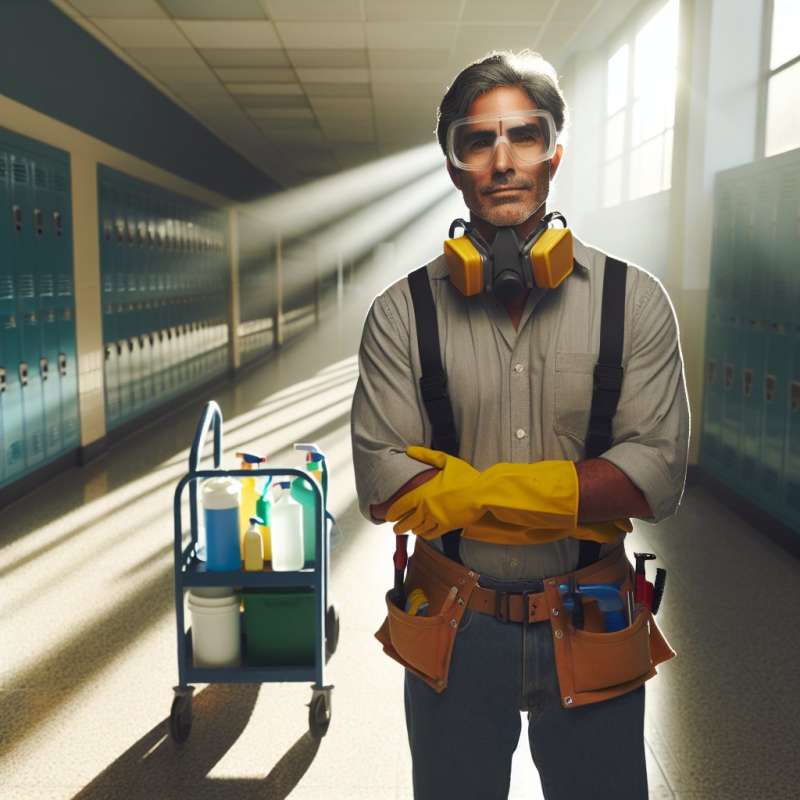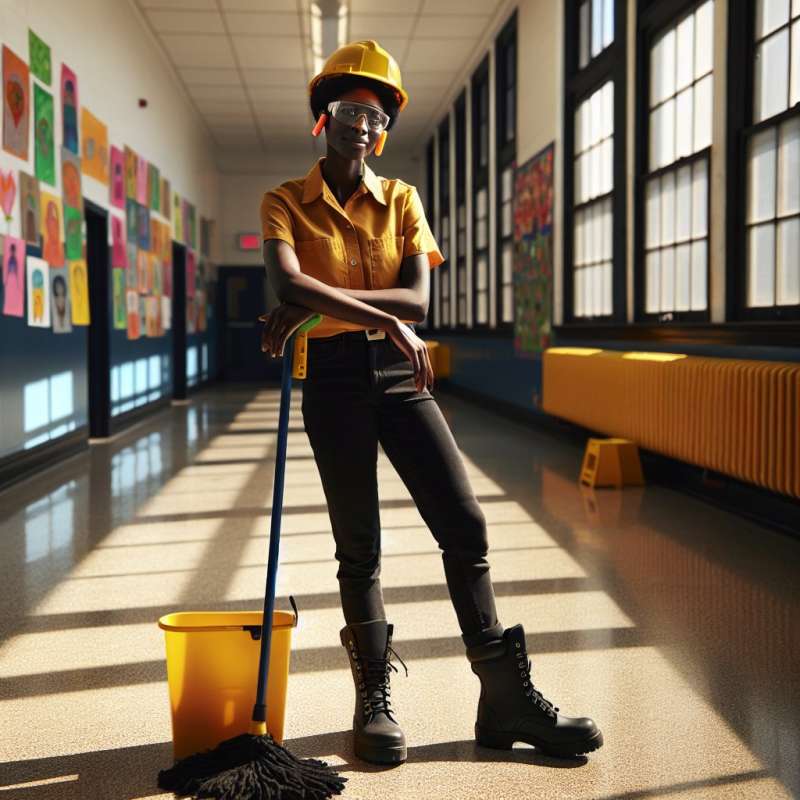
PPE Introduction
Personal Protective Equipment (PPE) in schools minimizes exposure to hazards. PPE includes gloves, masks, and eye protection, tailored to job-specific risks like chemicals in science labs or maintenance work.
PPE Policy Compliance
Schools must comply with OSHA standards for PPE. Staff training includes proper use, care, and maintenance of equipment. PPE policies are crucial for legal and safety compliance in school environments.
PPE for Cleaners
Janitorial staff require specialized PPE. Protective gloves, eye goggles, and sometimes respirators are necessary when handling cleaning agents or performing tasks like unclogging drains to prevent chemical exposure.
Lab Safety Gear
Science teachers and lab technicians need lab coats, gloves, goggles, and sometimes face shields. These protect against chemical splashes, broken glass, and biological specimens in educational labs.
Cafeteria Worker PPE
Cafeteria staff use PPE to maintain hygiene and prevent food contamination. Hairnets, gloves, and sometimes aprons are standard. Surprisingly, slip-resistant shoes are also considered PPE, preventing falls.
PPE for Maintenance
Maintenance workers in schools might require heavy-duty PPE, such as hard hats, safety glasses, steel-toed boots, and hearing protection, particularly when working with machinery or performing construction-related tasks.
Tech Enhanced PPE
Emerging technology integrates with traditional PPE. Smart glasses can provide instructional prompts for complex tasks, while wearable sensors monitor environmental conditions, ensuring safer and more efficient school workplaces.
What does PPE stand for?
Personal Protection Equipment
Personal Protective Equipment
Public Protection Equipment
Company